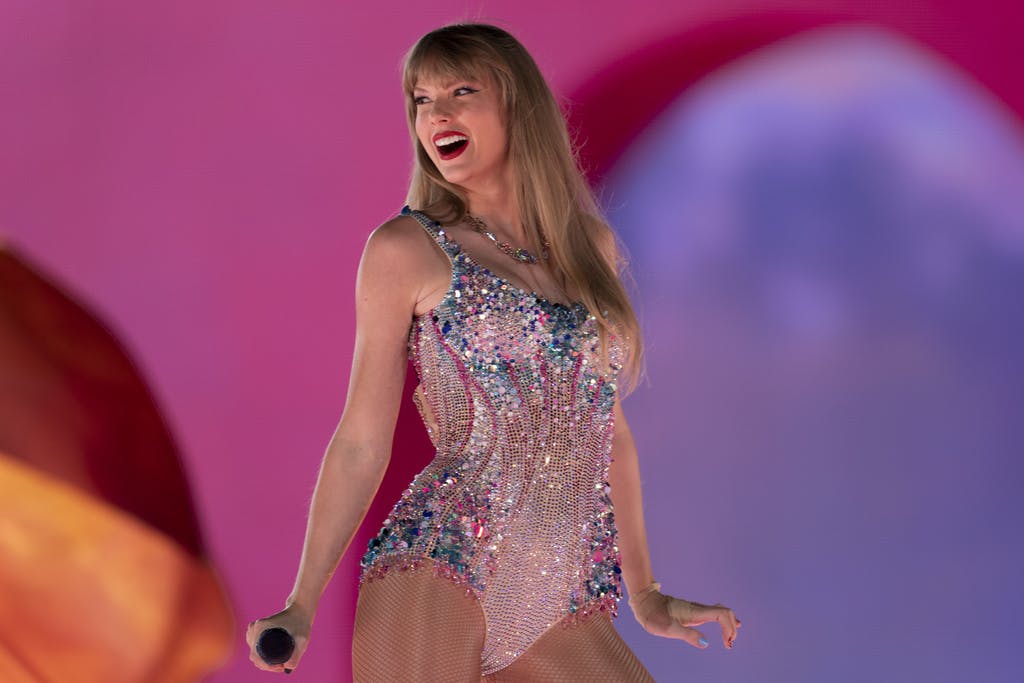Swiftian Studies Sweep Academia, With Harvard Joining the List of Universities Launching Courses on the Pop Sensation
‘The most famous woman in the world right now,’ says an English professor, is ‘reviving interest in the humanities.’

Taylor Swift and William Shakespeare, born more than four hundred years apart, share little in common besides Ms. Swift’s pop song “Love Story,” inspired by his play, “Romeo and Juliet.” Now, though, both artists will be studied side-by-side in the hallowed halls of some ivory towers.
Next Spring, Harvard’s English Department will debut the course “Taylor Swift and Her World,” taught by an acclaimed professor, poet, and literary critic, Stephanie Burt. The University of Florida will also launch a course next semester focused on the pop artist’s musical storytelling. The University of Texas, Arizona State University, Stanford University, and U.C. Berkeley have recently pioneered similar courses as Swiftian studies take over academia.
Ms. Swift, as “the most famous woman in the world right now,” is “reviving interest in the humanities,” an English professor, Elizabeth Scala, who taught the first literary course on the pop star last fall at Texas, tells the Sun. “The storytelling part of her music,” reminiscent of its roots in the country genre, she says, “has given professors of literature a way to attract students.”
The required reading for Ms. Scala’s course, which will be offered again in the spring following an “explosion” in demand, included four of the singer-songwriter’s recent albums alongside the works of Chaucer, Shakespeare, Dickinson, and other great poets. The new course at Harvard will examine how Ms. Swift’s work intersects with the literary canon of the 19th and 20th centuries. The juxtaposition might, for some intellectuals, appear “unserious.”
Teaching a course on Ms. Swift, though, does not necessarily imply that her talent matches that of Shakespeare, says a professor of musicology at the University of California, Los Angeles, Robert Fink. “The point of teaching any music is to use it as an instance of human creativity and to understand culture,” says Mr. Fink. He chairs the school’s music industry program, where, he says, “aspects of Taylor Swift are in every class.”
With 12 Grammy awards under her belt, Ms. Swift is the most streamed artist in the world, Spotify reported on Wednesday. Through next year, she is performing her vast repertoire of country and pop songs to audiences across the world, who have praised her as a godlike figure. The Eras Tour has made the singer a billionaire and is shaping up to be the biggest in music history.
“Artistry & Entrepreneurship: Taylor’s Version” will be studied in a partial-credit, 13-week course offered at Berkeley’s business school in the spring. The course’s founder, Crystal Haryanto, an alumna of the university, tells the Sun that she launched the course “just as Taylor became a billionaire — and we’ll find out how she did that.”
The first-ever Swiftian curriculum came from New York University’s music department in the spring of 2022. Taught by Rolling Stone staff writer Brittany Spanos, the course examined the pop star’s entrepreneurship and relationship to the music industry. At the end of that semester, Ms. Swift was NYU’s commencement speaker and earned an honorary doctorate of fine arts.
“The diva of the moment” can serve as a powerful cultural force, says Mr. Fink. Beyonce’s music in the 2010s opened up conversations about race. Madonna’s music in the 1980s challenged conventional notions of art, contributing to the late 20th-century intellectual movement of postmodernism. Now, Ms. Swift, he says, serves as “an entryway to talk about everything from identity, gender, sexuality, to politics.”
The first academic studies of popular music came not from music departments, which derided the subversive rock and roll music of the 1960s and 1970s within its “cultural hierarchy of music,” says Mr. Fink. Instead, such courses appeared in English departments, which positioned their works as “cultural texts” and, therefore, “culturally serious art.”
Ms. Swift’s discography already engages with great literature. In her track, “The Lakes,” for example, she wrote the line “tell me what are my Wordsworth,” a reference to the English Romantic poet, William Wordsworth. Her more than 200 songs from ten studio albums can function as levers into critical literary analysis.
Ms. Scala’s course builds connections between Ms. Swift’s best-selling pop songs and, say, love poetry from the Renaissance. She teaches the hit song “Red,” whose chorus declares, “loving him was red,” to explore the tools of metaphor and simile. Ms. Swift’s re-revisiting of earlier moments in her life through her music also invites conversations about the idea of artistic revision and the relationships between divergent texts from the same period.
“By saying she’s literary,” explains Ms. Scala, “I put her in the category of a Bob Dylan, who’s winning a Nobel Prize, or a Kendrick Lamar, who’s winning a Pulitzer Prize,” she says. “There’s some kind of value here, not articulated just by her monetary success or award-winning success as a musician.” The same kind of course could be launched for other pop stars, but, the professor says, few today write their own music.
While some artists like Janice Joplin and Sly Stone are “legendarily genius” but “self-destructive,” Mr. Fink says, “there are artists whose cultural message is: empowerment through discipline and self-control.” That has been Ms. Swift’s calling card since she released her first song at age 16. “For someone who started as a teenage songwriter, a woman, to embody that message,” he says, “is interesting culturally.”
Amid a decline in student enrollment in humanities courses, Ms. Swift’s entrance into the academic realm could help “the crisis of being a music historian in a world in which classical music is becoming a smaller and smaller fraction of the cultural world,” says Mr. Fink. “A responsible academic,” he says, should “meet the students where they are.”

